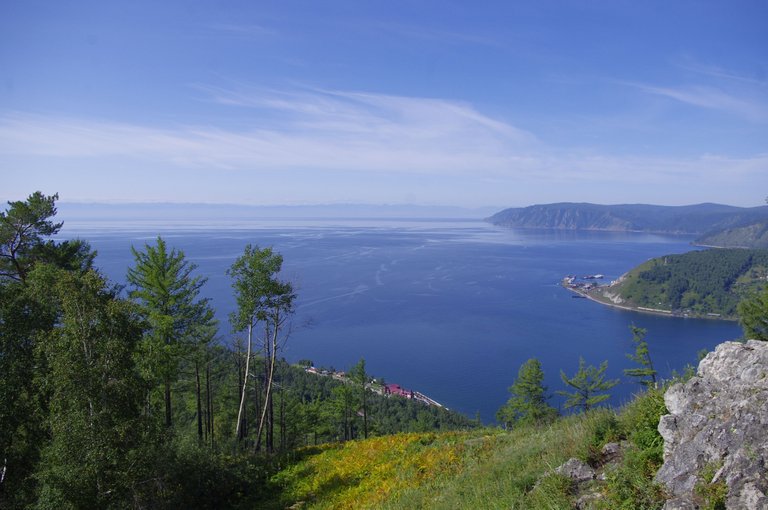
Hi there, Steem!
Today I'd like to share some stories about lake Baikal's golden treasures. One of the "golden" treasures is offered by the nature itself, but some of them are left by the Russian history.
Some facts about Nature is being generous.
For the title of the eighth wonder of the world, several places on the planet could compete at once. One of them, undoubtedly, is Baikal.
In ancient times, this lake was called Bay-Hai (the northern sea) and was mentioned in Chinese literary monuments. Mongolian Baikal was called Baigaal-Dalai, which translates as "rich fire", and in Turkic languages - Bai-Kul, which means "rich lake".
The Baikal is the world's largest freshwater reservoir. 1/5 of all natural fresh water is located there. If you pour this water on the tanks and divide between all the Russians, each will get almost 3000 train tank cars! Even the five Great American Lakes together can not compete with the amount of water with Lake Baikal.

The water in the lake is so clean that you can drink it right away, without pre-treatment. This also can not boast of any other lake of the planet. If water suddenly disappeared in Lake Baikal, all the world's rivers would need a year of "work" to refill the lake. The water in Baikal tastes very much like distilled water. There are very few dissolved and suspended mineral substances, negligible organic impurities, and a lot of oxygen.
By the end of winter, ice thickness on Baikal reaches 1 m, and in bays - 1,5-2 m. In severe frost, cracks, which have a local name "stony cracks", rupture ice into separate fields. The length of such cracks is 10-30 km, and the width is 2-3 m. Discontinuities take place annually in approximately the same areas of the lake. They are accompanied by a loud crash, reminiscent of peals of thunder or shots from guns. Thanks to cracks in the ice, the fish on the lake do not die from lack of oxygen.
Baikal is the oldest lake in the world. According to the calculations of scientists, it can be up to 35 million years. Despite such venerable age, the lake is very young: its banks are still actively moving, shifting to 2 cm per year. Baikal is also a lake with the deepest depth. The maximum removal of the bottom from the surface is 1642 meters. But, perhaps, the lake is deeper, just a deeper point has not yet been discovered. On Baikal go not only for natural beauty, but also for the sun: in some places of the lakeside 300 days a year there is clear weather.

The Baikal rift zone refers to areas with high seismicity: earthquakes occur regularly here, the strength of most of which is one or two points. However, there are also strong ones; Thus, in 1862, during the ten-point Kudara earthquake in the northern part of the Selenga delta, a land plot of 200 km² landed with 6 ulus, inhabited by 1,300 people, and the Gulf of Proval was formed. The last strong earthquakes in Lake Baikal occurred in August 2008 (9 points) and in February 2010 (6.1 points).
By the number of unique animals, Baikal resembles the Australian continent. In the lake and on the banks there are more than 3600 representatives of flora and fauna, about 70% of which are not found anywhere else. In Lake Baikal are found some of the most ancient animals of the planet - sponges. And also in its waters lives the famous Baikal sturgeon: a one and a half meter handsome man weighing more than 100 kg. On the shores of Lake Baikal grow a cedar that celebrated the 550th anniversary, and a real old timer among larch trees - a tree that is already over 700 years old! In 1996 Baikal was inscribed on the UNESCO World Heritage List.

Russian history around Baikal
Chinese golden caravan

According to local legend, in the cave of the cliff Sagan-Zaba buried a golden treasure, hidden by the Chinese. They could not transport it through Lake Baikal on camels and had to bury them. The entrance to the cave is still unknown, and references to it and descriptions can be found in the books of the 1920s. XX century.
This cave was searched for by many, but nobody can find it yet. Local people eventually composed even a new legend about a supposedly mystical obsession: a cave is found, but the next day mysteriously the road to it is forgotten, and everything connected with it disappears from memory.
Silver caravan

In the winter of 1867, on the eve of the New Year, a mail wagon arrived from Irkutsk to Kultuk, laden with leather sacks filled with silver coins. At this time, a trade fair opened in Kyakhta, and the local merchants promised a big bonus for the early delivery of this valuable cargo from the capital mint. Therefore, the officials accompanying the convoy neglected caution and left for the fragile ice of Lake Baikal.
The first three of the postal wagon immediately fell through the ice. The driver and horses were killed. The remaining convoy had not yet managed to leave the shore, this saved the lives of the others. Four months later the cart was lifted from the bottom and pulled ashore, but there was no money in it. Probably, seven sacks of silver coins still lie somewhere on the bottom of Lake Baikal, 100-200 meters from the failure near the Shamansky cape, which is near Kultuk.
Admiral Kolchak's gold
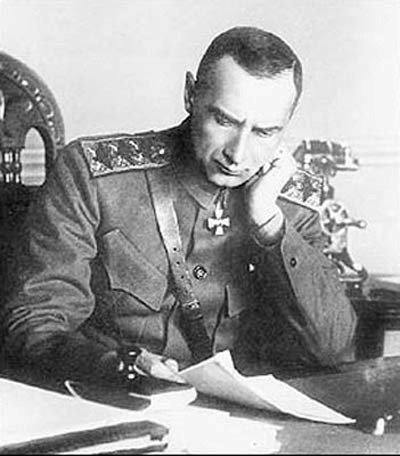
In historical works on Admiral A.V. Kolchak formed an image of a scrupulous and diligent Supreme ruler, who was doing everything to save Russia's gold reserves. In fact, the admiral did not save, just two months after coming to power, he began to actively spend the gold he had received. With its short-term management, stocks for eight months decreased by 235.5 million rubles, or 36.1% of all gold.
Gold was actively spent for procurement of weapons and warfare, sold in large lots to foreign banks. According to archival documents, seven shipments of noble metal took place. A total of more than 235 million gold was sent to Vladivostok, but not all of it was safely reached him - the gold train sent on October 18, with 182 boxes of gold bullion and 550 with the Russian gold coin, the total weight of gold was 33.7 tonnes , Ataman Semyonov captured in Chita.
Most of this gold was transferred for temporary storage to the Japanese occupation authorities and taken to Japan. Of the last gold composition of Kolchak in January 1920, 4.6 million gold rubles disappeared without a trace. Of greatest interest is the history of the last echelon, the theft of which gave rise to persistent rumors about the hidden gold of Kolchak in the Eastern Sayan. To the squandering of gold, the hand and the entourage of the Supreme Ruler put their hand - so, when Kolchak was arrested in Irkutsk, 7 numbered gold bars of the State Bank of Russia were found in his car.
Simple arithmetic calculations allow you to accurately calculate the amount stolen from the last gold composition, the legends of which are still alive. In Omsk, on the train "letter D" on November 10, 1919, gold was poured for the sum of 414 million 254 thousand gold rubles, and in Kazan from the returned from Irkutsk gold echelon, sent on April 9 and arrived in Kazan on May 7, 1920, unloaded 19 437 poods in the amount of 409,626,103 rubles, of which gold coins were valued at 396,620,743 rubles, gold bullions - 13,005,359 rubles.
For more than six months traveling through Siberia, gold reserves decreased by 4.628 million gold rubles, this fact does not give rest to treasure hunters and historians. Until 1914, the Russian Empire had a gold standard. One ruble contained 0.744235 g of gold, 1 million rubles, respectively, was 0.774 tons of gold, and 4.628 million of missing gold rubles - 3.582 tons: approximately so much in weight equivalent completely disappeared from the last gold tier of Kolchak.
The mystery of this lost gold breeds all new versions and legends. The key moments for clarifying the fate of gold from Kolchak's last composition are two facts that are controversially described by the participants in the events. The first and most important question for ascertaining the truth - was gold in one echelon? It is known that, after Nizhneudinsk, the protection of the gold composition passed to the beleaguers and the wagons were heavily guarded by them, they steal gold and hide it in a hiding place the Czechs would not have become, it was more important to take them with them from Russia. As it is believed, although there is no conclusive evidence, this is exactly what the Czechs did. On stolen gold, the Legio Bank was founded in the Czech Republic. A letter sent by the Minister of Foreign Affairs of the Czechoslovak Republic, Dr. Edward Beneš, was preserved on February 13, 1920, that is, after the signing of the treaty between the legionaries and the Russian side: "The allies would welcome the rescue of the train with the Russian gold reserve. If it is still in your power, try to take it out to a safe place, for example in the Czech Republic."
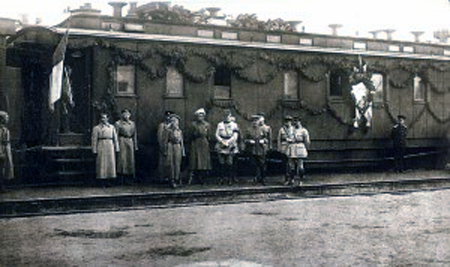
On October 28, 1919, the evacuation of the Kolchak government and the gold reserve from Omsk began. Loading in the cars was done secretly, mostly at night, and it was almost two weeks.
At dawn on December 14, 1920, ahead of the traffic light on the way from Omsk to Tatarsk at the Kirzinskoe road, the West Siberian railway, located on the road in front of Barabinsky, "letter В" - with protection - crashed into the tail of the train with gold. "A blow of great strength broke nine of the cars with gold, in the collided echelons a fire broke out, and then the ammunition that was at the guard began to explode. A few cars got off the rails. From the collision, 147 people were injured, 15 of them were killed, 8 were burnt. "
From that moment, the gold composition no longer represented one whole. In favor of this version is the fact of an earlier arrival in Irkutsk of three cars with silver and platinum. Gold composition arrived later. Of the 28 cars loaded in Omsk with precious metals, only 18 with gold and 3 with silver reached Irkutsk. Where 7 wagons of gold composition disappeared, it remains a mystery to everyone.
It is believed that full control over the gold composition was transferred to Czech legionaries - January 5 in Nizhneudinsk. However, there are facts that the decisive events took place on the night of January 12-13 at the checkpoint Polovina, where the remains of Admiral Kolchak's personal escort were disarmed.
January 22, 1920 in Irkutsk came to power the military revolutionary committee, whose representatives appealed to the legionnaires with the following proposal: in exchange for the royal gold they give the legion the possibility of movement to the east and further to Vladivostok.
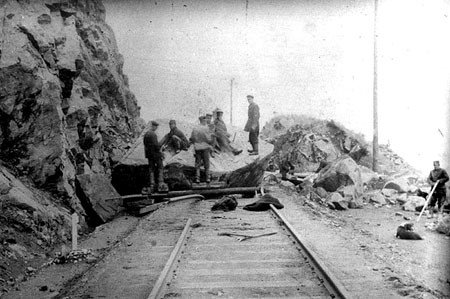
Collapse on the Circum-Baikal Railway. Early 20th century
Another version is the wreck of the train with part of the gold reserve on the Circum-Baikal railway. This hypothesis, which many researchers consider doubtful, was unexpectedly confirmed during the expedition of the "Worlds" on Lake Baikal. "
Exactly one year later, on August 30, 2010, during a dive in the area of the 81st km of the Circum-Baikal Railway, GOA Mir-2 made a unique find at a depth of about 400 m. This is how Bair Tsyrenov commented on this dive participant: "After being detected at depth almost 1000 meters of fragments of metal structures, similar to the farm railway bridge CBR, the apparatus began to rise along the shore slope, covered with scree rocks. On this hillside were found 4 bars with a characteristic golden shine, sandwiched in a crevasse on screes. We were able to get as close to the find as possible, but since the scree is a very mobile structure, any manipulator actions caused the gravel to move. The manipulator could not reach the finds, but we fixed their exact coordinates. "
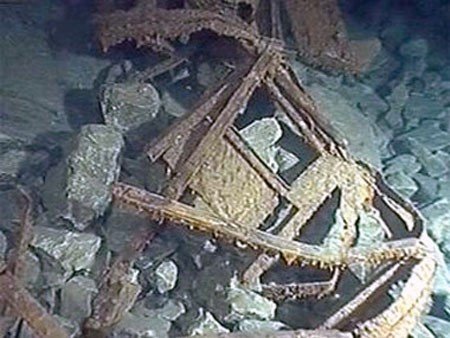
The remains of a railway car found at the bottom of Lake Baikal. Photo from the board of GOA "World 2". August 29, 2009
Are the findings of GOA "Mir" by that most lost part of the "gold of Kolchak", will further studies show.
Uranium gold

In the winter of 1941, a geological expedition from Leningrad to Eastern Transbaikalia set out to search for uranium ore deposits. At the end of May, geologists reached Nizhneangarsk, from where, with a caravan on packhorses, went to the Severomuisk ridge, where a camp was laid and geological exploration was started. The area turned out to be promising for uranium ores, along with rich gold deposits.
June 22, the war began. The head of the expedition was given a strict instruction: continue the work until the shift comes. Geologists, despite losing contact with the center, continued to work autonomously until 1944, but during this time, an unknown disease (apparently leukemia) caused the death of most of the expedition members.
The surviving eight people decided to go out on their own to the shore of Lake Baikal. With them, they took only samples of uranium ore and about 20 kg of gold washed during this time. During the transition to the lake, six more died. Both surviving members of the Uranium expedition reached Moscow, but soon died of a blood disease. And 20 kg of gold still lie somewhere on the shore of Lake Baikal.

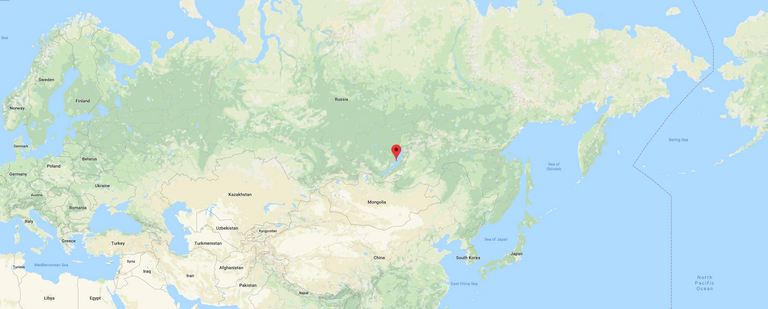
Baikal is massive, man! Been there once and looking to return there again
awesome place, u have presented it beautifully !
Very good post! I will follow you and upvote ;)
This post has received gratitude of 6.37 % from @appreciator thanks to: @equites.